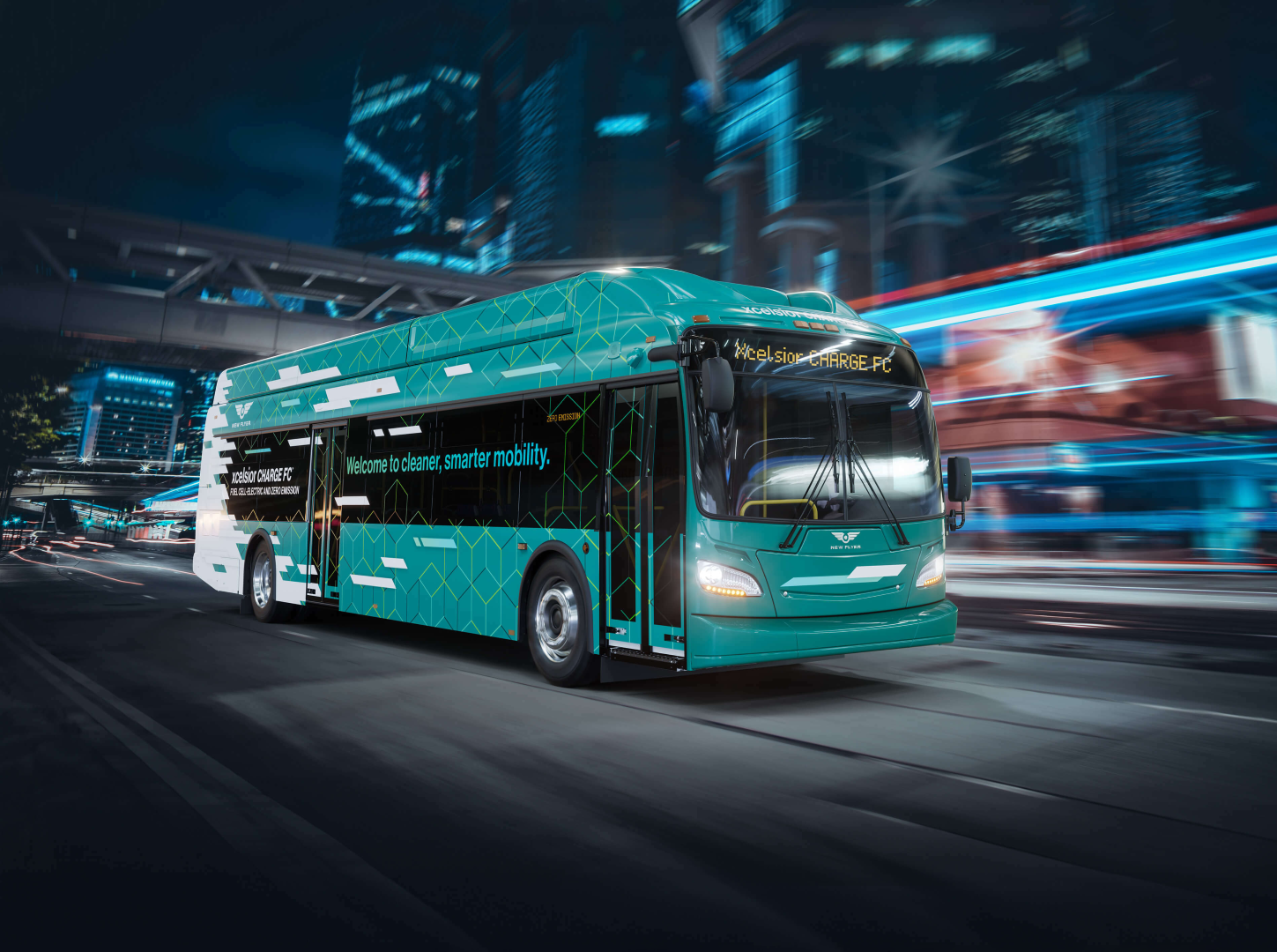New Flyer Unveils Extended Range Hydrogen Fuel Cell-Electric Bus
Key Ideas
- New Flyer introduced a new optional hydrogen four-tank-module for its Xcelsior CHARGE FC 40-foot bus, increasing both vehicle and operational flexibility by adding 17.5kg fuel capacity.
- Humboldt Transit Authority in California is among the first to deploy this solution, extending the vehicle range by up to 120 miles.
- The additional tanks enable storage for five standard hydrogen tanks, providing approximately 50% more fuel capacity.
- Performance in fuel economy and range has exceeded expectations, allowing for more dependable service, showcasing the benefits of forward-thinking solutions for the environment and the community.
New Flyer has unveiled an optional extended range hydrogen four-tank-module for its Xcelsior CHARGE FC 40-foot fuel cell-electric bus. The new solution aims to enhance vehicle and operational flexibility by adding 17.5kg of onboard fuel capacity. The announcement was made in partnership with the Humboldt Transit Authority in northern California, one of the first agencies to integrate this technology into its fleet. These additional tanks can extend the bus's range by up to 120 miles, providing increased service capabilities. New Flyer's Vice President, Sales and Marketing, Jennifer McNeill, highlighted the importance of mobility solutions that cater to various communities, including those with longer service routes and harsh climates.
The successful implementation of this technology showcases improved performance in both fuel economy and range, exceeding expectations. This achievement enables more reliable and dependable service for the community, demonstrating the positive impact of innovative solutions on the environment and the passengers served. The addition of four transverse-mounted tanks allows storage for five standard hydrogen tanks, resulting in a 50% boost in fuel capacity. This technological advancement signifies a significant step towards sustainable and efficient public transportation, setting a precedent for future innovation in the industry.
